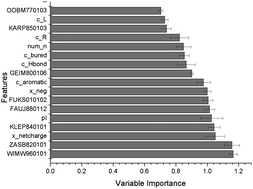Discrimination of soluble and aggregation-prone proteins based on sequence information
Abstract
Understanding the factors governing protein solubility is a key to grasp the mechanisms of protein solubility and may provide insight into protein aggregation and misfolding related diseases such as Alzheimer's disease. In this work, we attempt to identify factors important to protein solubility using feature selection. Firstly, we calculate 1438 features including physicochemical properties and statistics for each protein. Random Forest algorithm is used to select the most informative and the minimal subset of features based on their predictive performance. A predictive model is built based on 17 selected features. Compared with previous models, our model achieves better performance with a sensitivity of 0.82, specificity 0.85, ACC 0.84, AUC 0.91 and MCC 0.67. Furthermore, a model using a redundancy-reduced dataset (sequence identity <= 30%) achieves the same performance as the model without redundancy reduction. Our results provide not only a reliable model for predicting protein solubility but also a list of features important to protein solubility. The predictive model is implemented as a freely available web application at http://shark.abl.ku.edu/ProS/.


 Please wait while we load your content...
Please wait while we load your content...